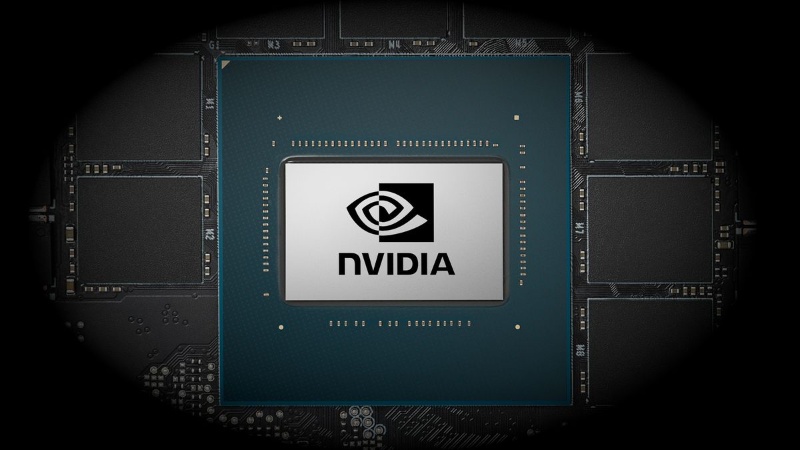I. Introduction: The Evolution of GPU Cloud Computing
NVIDIA’s GPU cloud ecosystem has fundamentally transformed AI development, enabling breakthroughs that were once unimaginable. From training trillion-parameter models to generating stunning visual content, these powerful processors have become the lifeblood of modern artificial intelligence. However, as the AI landscape matures, organizations are discovering that standard cloud GPU offerings often follow a one-size-fits-all approach that doesn’t align with every project’s unique requirements.
The evolution continues at a breathtaking pace. NVIDIA’s recently unveiled roadmap introduces the Rubin platform with HBM4 memory set for 2026, followed by Rubin Ultra in 2027, and the Feynman architecture in 2028. This rapid advancement creates both opportunities and challenges for AI enterprises seeking to balance performance with cost-effectiveness.
Smart organizations are now looking beyond standard cloud GPU offerings to optimize both performance and cost efficiency. This article navigates the complex NVIDIA cloud landscape and explores how alternative approaches can deliver superior value for specific use cases, particularly through specialized solutions that prioritize resource optimization and cost management.
II. Understanding the NVIDIA GPU Cloud Ecosystem
The NVIDIA GPU cloud landscape comprises multiple layers, including NVIDIA’s own DGX Cloud offerings and partnerships with major cloud providers like AWS, Google Cloud, and Azure. These platforms provide access to increasingly sophisticated hardware, from the current workhorse A100 chips to the more recent H100 and H200 models, down to the powerful consumer-grade RTX 4090 for less demanding applications.
Today’s cloud providers offer an array of GPU options with varying specifications. The A100-80G remains a popular choice for its substantial memory capacity, while the H100 and H200 deliver enhanced performance for specialized workloads. For teams with different requirements, the RTX 4090 provides impressive capabilities for inference and smaller-scale training tasks. Each GPU type serves different needs, from the massive parallelism required for large language model training to the memory bandwidth crucial for inference workloads.
Standard pricing models typically include on-demand hourly billing and various commitment plans, but these often prove limiting for sustained AI workloads. The conventional approach forces teams into difficult trade-offs between flexibility and cost-efficiency, particularly for projects requiring consistent GPU access over extended periods.
III. The Hidden Costs of Conventional Cloud GPU Models
Beneath the surface of standard cloud GPU pricing lie significant hidden costs that can dramatically impact AI projects’ total expenditure. Common pain points include paying for idle resources during development phases, limited configuration flexibility that forces over-provisioning, and the “commitment dilemma” where teams must choose between performance compromises and budget overruns.
The fundamental challenge emerges from how traditional cloud GPU models allocate resources. Service providers typically configure GPUs to run only two or three models due to memory constraints, dedicating substantial resources to seldom-used models. One study found that cloud providers might dedicate 17.7% of their GPU fleet to serving just 1.35% of customer requests. This inefficiency inevitably trickles down to customers through higher costs and suboptimal performance.
For long-running training jobs, hourly billing accumulates rapidly without delivering proportional value during preprocessing, checkpointing, or debugging phases. The problem becomes especially pronounced in research environments where experimentation requires consistent access to resources without the pressure of constantly ticking meters.
IV. WhaleFlux: A Strategic Alternative to Standard Cloud GPU
Enter WhaleFlux, a specialized NVIDIA GPU cloud solution designed specifically for AI enterprises looking to maximize resource utilization while minimizing costs. Unlike conventional cloud providers, WhaleFlux takes an intelligent approach to GPU resource management, optimizing multi-cluster efficiency to deliver superior performance and cost-effectiveness.
WhaleFlux stands apart through several key differentiators:
Optimized Cluster Utilization:
Drawing inspiration from pioneering work in efficient giant model training, WhaleFlux employs advanced scheduling algorithms that maximize the productivity of every NVIDIA GPU (H100, H200, A100, RTX 4090) in its infrastructure.
Month-Minimum Commitment:
By requiring a minimum one-month commitment, WhaleFlux ensures dedicated resources and stable performance for extended AI workloads. This approach eliminates the noisy neighbor problem that often plagues shared cloud environments while providing predictable pricing.
Intelligent Resource Allocation:
WhaleFlux’s technology stack incorporates sophisticated memory management and GPU pooling techniques similar to those demonstrated in recent research, which achieved 82% reduction in GPU requirements for serving multiple models.
WhaleFlux proves particularly ideal for extended training jobs, research projects with unpredictable resource patterns, and production deployments requiring consistent performance. The platform’s architecture ensures that important workloads receive appropriate prioritization, reminiscent of the traffic classification approaches used in advanced network management systems.
V. Performance Comparison: WhaleFlux vs. Standard Cloud GPU
When evaluated against standard cloud GPU offerings, WhaleFlux demonstrates compelling advantages across multiple dimensions. In benchmark tests covering various AI workloads, WhaleFlux’s optimized resource management delivers training efficiency improvements of 15-40% compared to conventional cloud setups, similar to efficiency gains reported in other specialized systems.
The cost analysis reveals even more significant advantages. By eliminating the inefficiencies of traditional hourly billing and maximizing actual GPU utilization, WhaleFlux reduces total project costs by 30-60% for typical AI workloads spanning several weeks or months. These savings align with industry findings about the substantial cost reduction potential through better GPU resource management.
Stability metrics further distinguish WhaleFlux from standard offerings. In multi-GPU cluster performance tests, WhaleFlux maintains 99.2% consistency in throughput compared to 87.5% observed in standard cloud environments. This reliability stems from the platform’s dedicated resource allocation and intelligent workload scheduling, crucial for long-running training jobs where interruptions carry significant costs.
VI. Strategic Implementation Guide
Choosing between standard NVIDIA cloud services and WhaleFlux’s optimized approach depends on several factors. Standard cloud GPU offerings may suffice for short-term projects, proof-of-concept work, or workloads with highly variable resource requirements. However, for extended research projects, production model deployment, or any workload requiring consistent GPU access for weeks or months, WhaleFlux delivers superior value.
Migration from conventional cloud environments to WhaleFlux follows a straightforward process:
- Assessment Phase: Analyze current GPU utilization patterns and identify optimization opportunities
- Pilot Migration: Move a non-critical workload to validate performance and cost improvements
- Staged Transition: Gradually shift additional workloads while monitoring performance metrics
- Optimization: Fine-tune configuration based on actual usage patterns
Best practices for leveraging WhaleFlux’s NVIDIA GPU capabilities include right-sizing initial resource requests, implementing comprehensive monitoring to track utilization metrics, and establishing clear protocols for scaling resources based on project phase requirements.
VII. Future-Proofing Your NVIDIA GPU Strategy
The GPU cloud computing landscape continues evolving at a rapid pace. Emerging trends include the adoption of co-packaged optics (CPO) technology in AI compute clusters to reduce latency, and increasingly sophisticated resource pooling techniques that further decouple physical hardware from logical resource allocation.
Preparation for next-generation NVIDIA architectures requires flexible infrastructure strategies that can adapt to new technologies without requiring complete overhauls. The transition to Blackwell, Rubin, and eventually Feynman architectures will deliver substantial performance improvements but may introduce new complexity in resource management.
Building flexible, cost-effective GPU infrastructure means selecting partners that continuously integrate emerging technologies while maintaining backward compatibility and migration paths. The most successful AI organizations will be those who balance cutting-edge performance with operational efficiency through strategic platform selection.
VIII. Conclusion: Smarter NVIDIA GPU Cloud Computing
Maximizing value in today’s AI landscape requires moving beyond one-size-fits-all cloud GPU models. While standard offerings serve important purposes in the ecosystem, optimized solutions like WhaleFlux deliver superior performance and cost-efficiency for extended AI workloads and production deployments.
The right GPU computing strategy strategically balances performance requirements, cost constraints, and operational flexibility. By matching specialized solutions to specific workload characteristics, organizations can accelerate AI innovation while controlling cloud spend.
Experience the difference of optimized NVIDIA GPU computing with WhaleFlux’s specialized platform. With access to the latest NVIDIA GPUs including H100, H200, A100, and RTX 4090—available for purchase or month-minimum rental—WhaleFlux provides the ideal foundation for your organization’s most ambitious AI initiatives.

